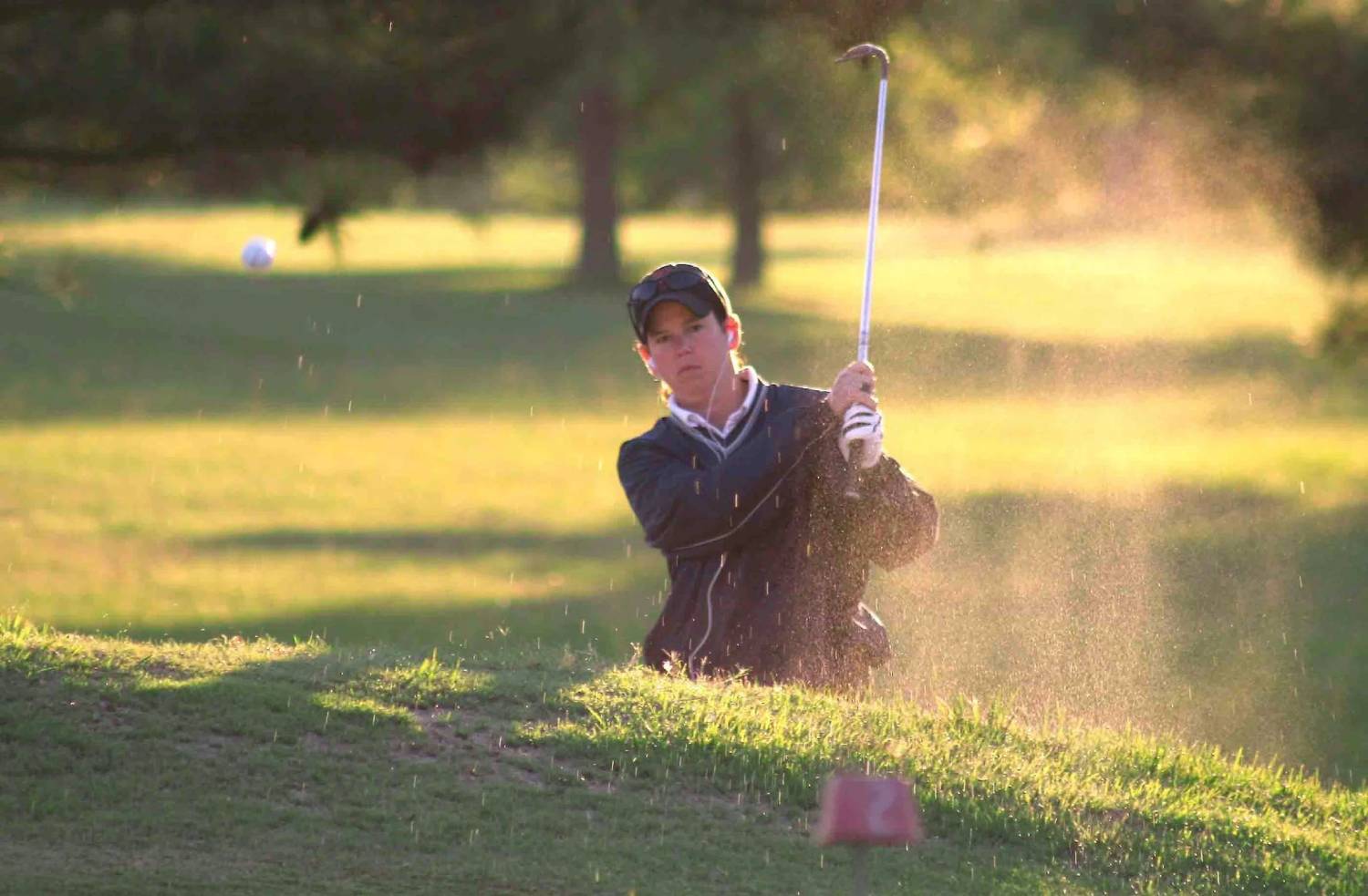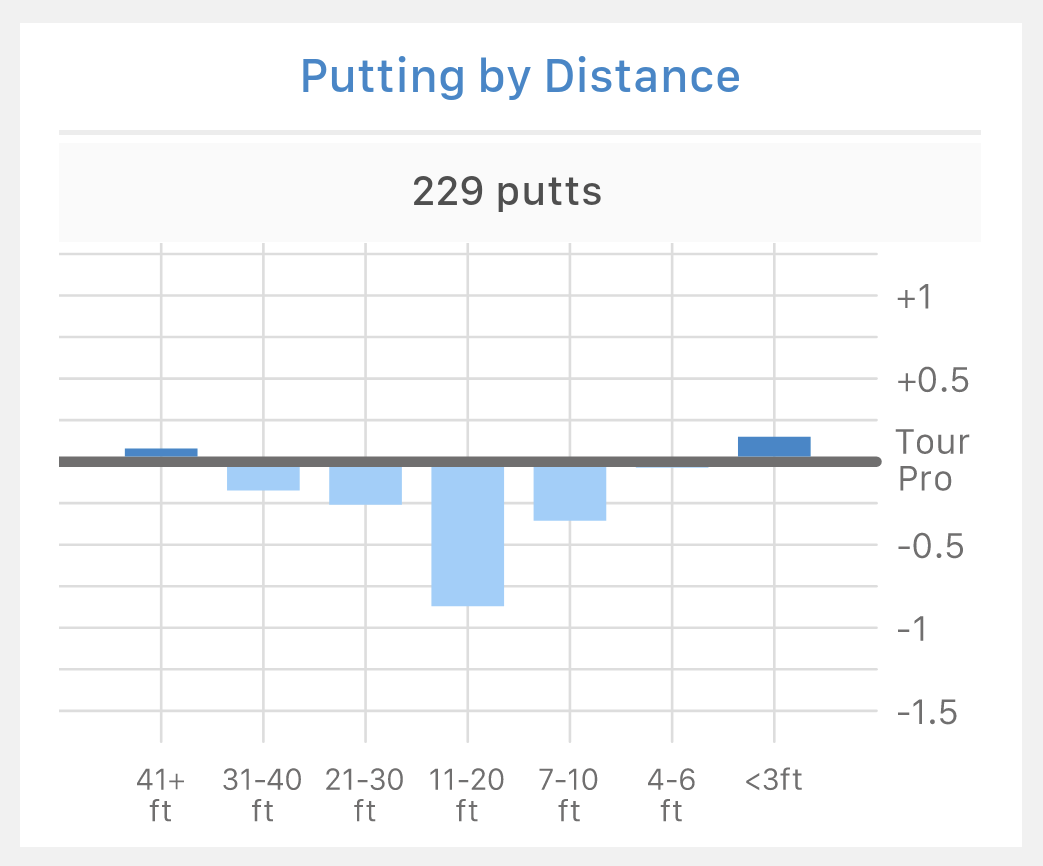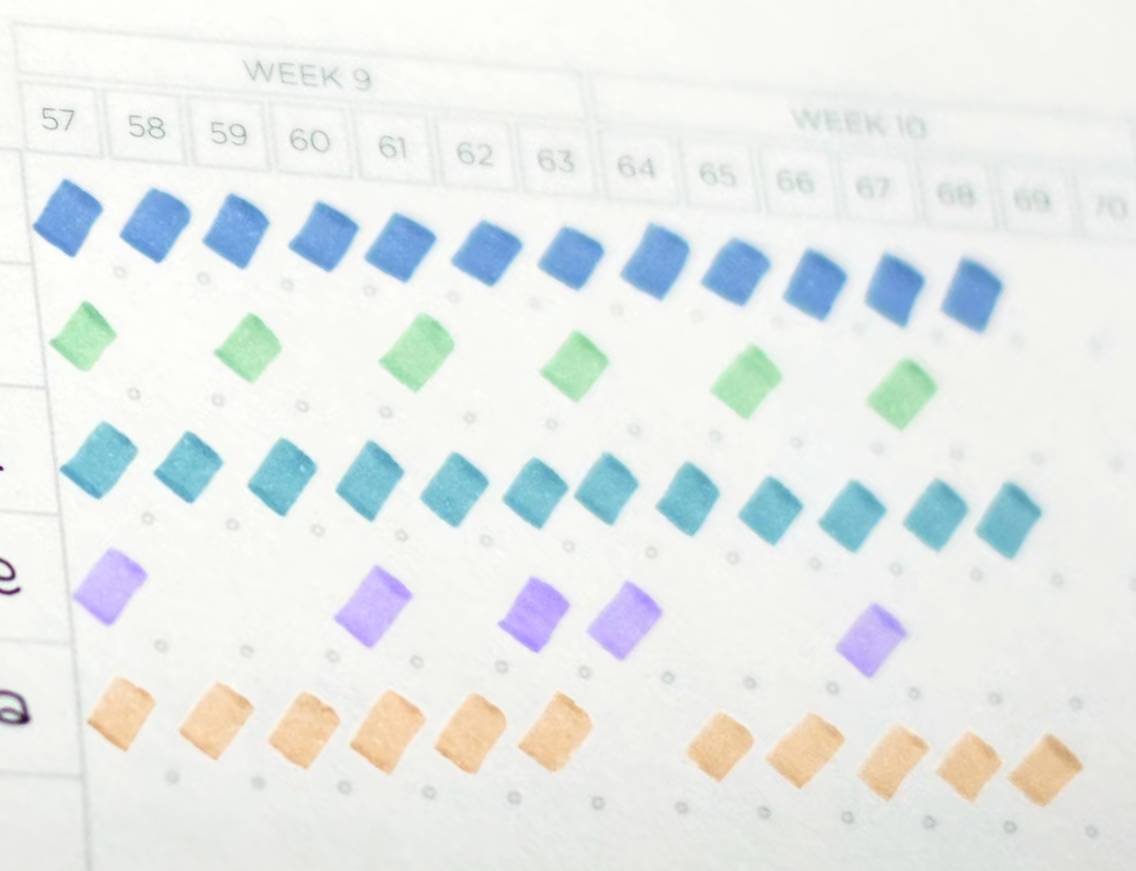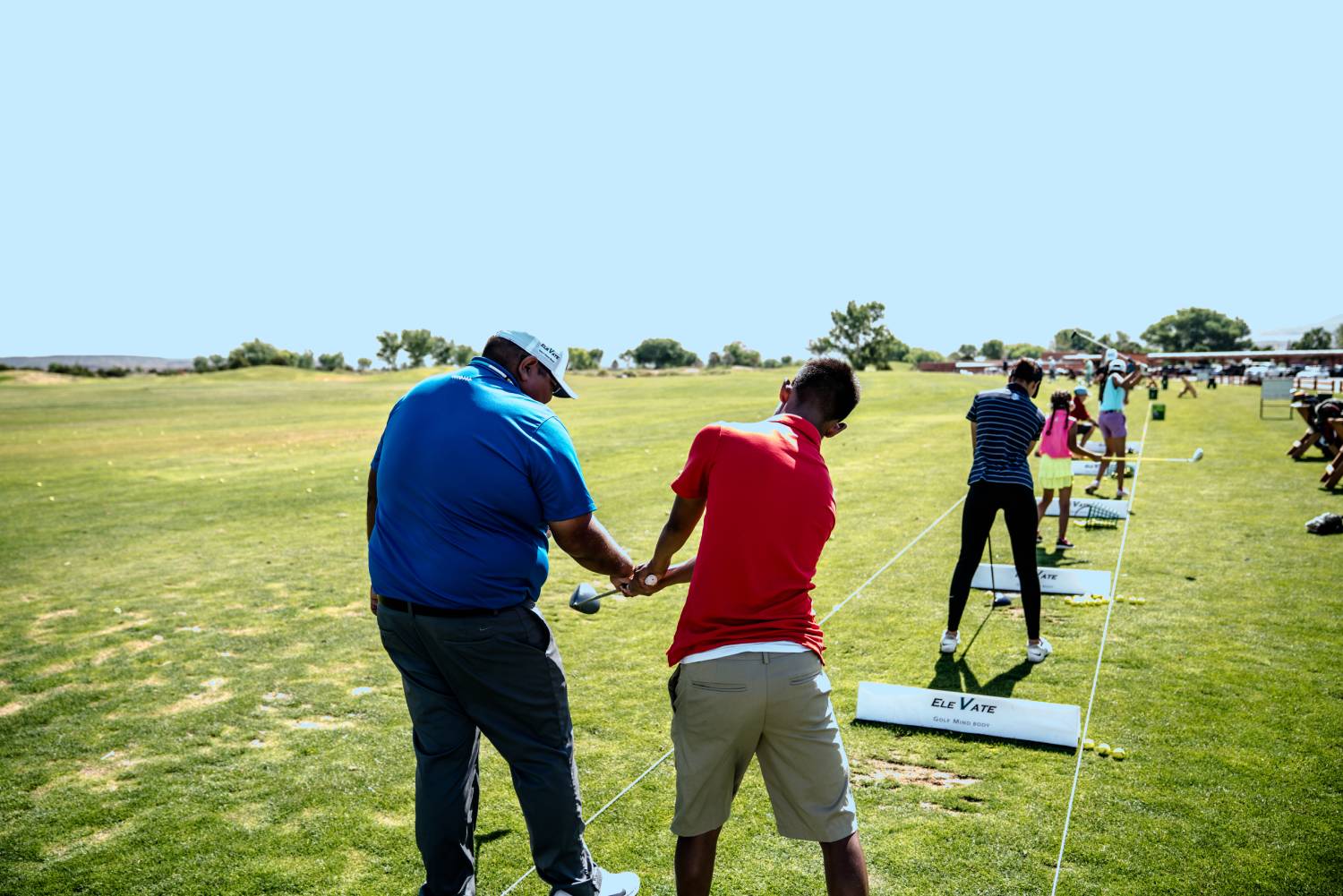Practicing haphazardly can be a good workout, but you really aren’t making any progress in your golf game. For your practice to translate to the golf course, you need to be deliberate.
You’ve seen golfers who visit the range looking like they’re on a mission. They’re focused and intent on making progress. If you want to be one of them, we’ll show you what it takes to set up a routine and become good at deliberate golf practice.

Fundamentals of Deliberate Golf Practice
Deliberate golf practice allows you to learn and improve in a way that translates to the golf course. During a deliberate golf practice session, you are not casually hitting golf balls; each shot is hit with a goal or a purpose in mind.
These sessions can still be entertaining and enjoyable, but most importantly, they are productive.
You will need:
- Data about your game
- A specific goal to improve
- Tools to measure your goal
- A fixed amount of time set aside for practice
Where to Start
The best place to start when developing a deliberate golf practice routine is with data. Gather data about your golf game and use it to identify your weaknesses and opportunities for improvement.
Let’s say you know that you can drive the ball 250 yards. Could reaching 260 yards help your game? It probably could. But will it make the difference and take your game to the next level? Probably not.
Instead, consider tracking strokes gained data for your golf game. You will have much more valuable insight into what you need to practice.
Strokes gained might show you that your 250 yard drives are actually well above average for your handicap, gaining you strokes. Meanwhile, it might show you that middle-distance putts are the real culprit, costing you multiple strokes per round.

If you can find the right data to work with, you can set up a very deliberate and effective golf practice routine.
Choosing a Goal
When choosing a goal, start with the weakest part of your game and progress in baby steps.
Suppose you are missing the green 9/10 times with your 7 iron. Working on improving to 0/10 or even 1/10 is a bit fast-paced and will likely cause you to get frustrated. Instead, work on trying to only miss 7 out of your next 10. If you can eventually get to around 5/10, the difference in your game will be noticeable.
Choose a reachable goal and be realistic, recognizing that even deliberate practice is not an instant cure-all.
Time Management and Structure of Practice Session
There’s no doubt that the majority of your practice time should be spent working on your goal. But that doesn’t mean you should neglect other areas of your game.
A practice session should consist of these elements:
- Warm-up and stretching (10-15% of your time)
- Working on your goal (40-50% of your time)
- Full swing target practice with varying clubs (10% of your time)
- Short game and putting practice (25-35% of your time)
- Cool down and stretch (5% of your time)
If your goal is short game related, you’ll spend most of your time around the green. But we still added some time for full swing target practice. Likewise if you’re focused on your swing, make sure to spend some time on short game and putting as well.
Feedback and Analysis
To know whether your practice is effective, you need feedback about your goals.
If you have the ability to bring a launch monitor to the range with you, it certainly can be helpful. When that’s not possible, make sure you pick clear targets, take notes, and check if the changes you make are inching you closer to your goal.
Most importantly, after a deliberate practice session, make sure you play a round and track your strokes gained again. Over time, consistent strokes gained tracking is the best way to see whether you’ve been making progress.
When you reach one goal, start working on the next one.
Consistency Over Time
Sadly, a single deliberate practice session won’t take three shots off your handicap. Consistency is key.
If you are good at golf course management, you know that it takes some time to put together a course management strategy. Approach these practice sessions the same way you approach your time spent on golf course management.
Plan out your session. Plan to be consistent with your practice time. Make sure deliberate practice is a part of your weekly golf routine.

Short-Term vs. Long-Term Practice Goals in Golf
When setting your practice goals, it’s smart to pick both short term and long term goals.
Short term practice goals are those that allow you to get instant results. You may want to get more accurate with your 7 iron or hit more of your drives straight as opposed to a slice. These are measurable goals. You can likely make significant progress in just a few sessions.
Long term practice goals in golf are going to be those based on handicap dropping and overall player development. If you want to move from a 16 handicap down to a 10, that’s a long-term goal.
Keep your long-term goals in mind as you choose short-term goals. Use each short-term goal as a step towards reaching those bigger goals. Then make sure every practice session has a measurable and well-defined short-term practice goal.
How Does the Mental Game Play Into This?
The mental game of golf is a large part of deliberate golf practice. When you are working on the range, try to create real life course conditions as often as you can. Make sure you are aiming your shots, you are visualizing the course, and you are feeling the pressure as you do on the course.
With this type of mental and pressure practice, your practice has a much higher chance of carrying over to the golf course.
One way to practice under pressure is to practice hitting a successful shot multiple times in a row. Try sinking 20 3-foot putts, or hitting 5 in a row on the green with a 7-iron. As you get closer to reaching your target, you’ll start to feel more pressure.

When to Get Help from a Golf Professional?
If setting up a practice routine is difficult for you, ask a local professional to help. Use the Pinpoint app to record your strokes gained data for at least five rounds of golf.
Once you have this information in place, share your rounds and your stats with a professional and let them help you come up with a practice routine.
With the right practice routine, you’ll spend less time on the range but accomplish quite a bit more.
Final Thoughts
Hopefully, you now feel a bit better about your ability to design and execute a deliberate golf practice session. Once you have your routine set up, all you need to do is get out there and work on it.
The Pinpoint Strokes Gained Stats App is the best way to collect your initial strokes gained data, then follow up with feedback and analysis to see if you are on the right track. With Pinpoint, you can take the guesswork out of golf practice.